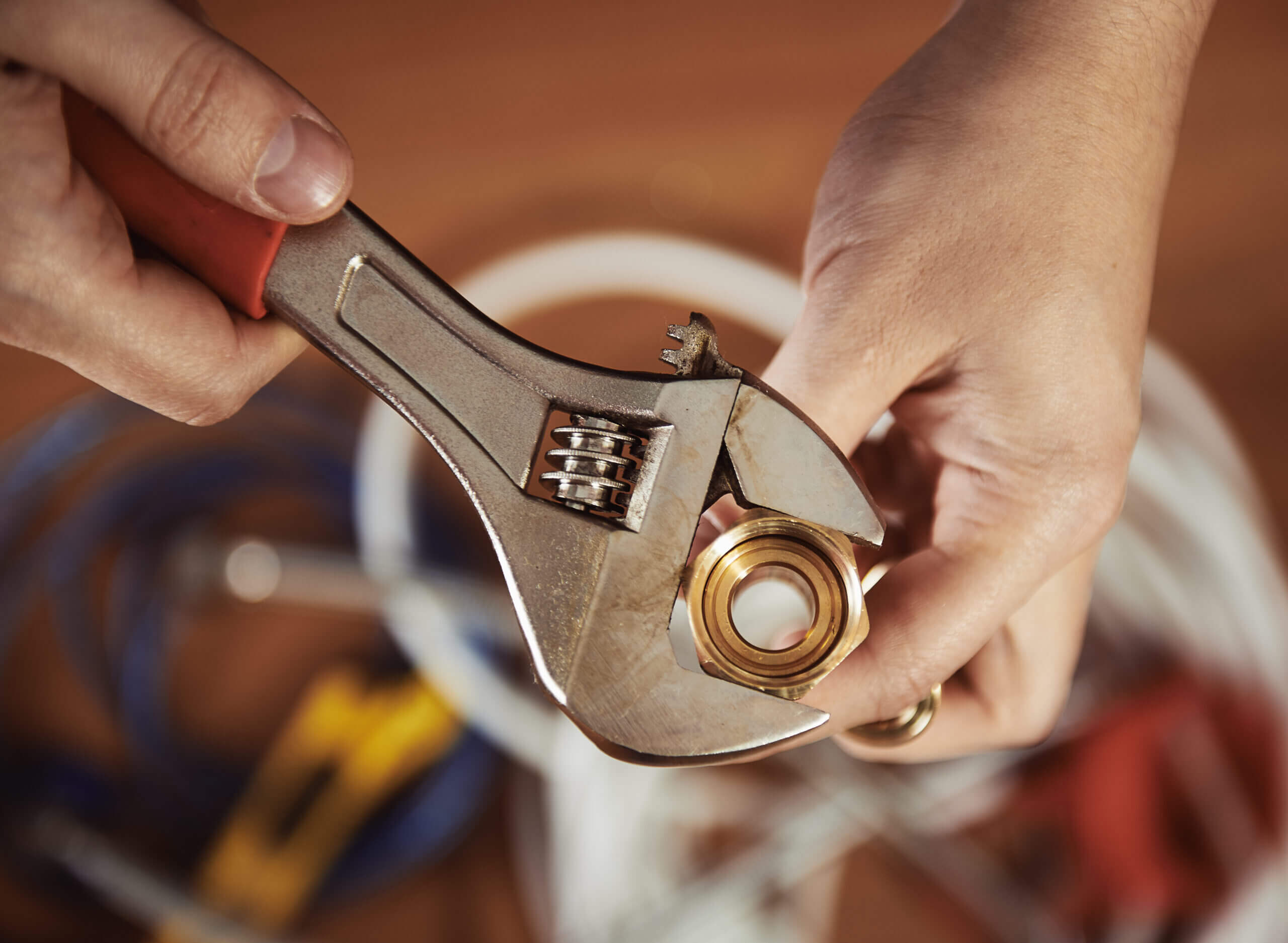It’s inevitable that in your property, at some point, there will be a plumbing issue that needs resolving. When this time comes, you want to make sure you are equipped with the most useful and most common tools required for plumbing.
If you’re one for DIY, building a plumbing tool kit will help you greatly. For those who are inexperienced in plumbing, it can be a bit overwhelming and intimidating.
Getting to know what some of the most common tools for plumbing are and learning a bit about what they do is a good start for anyone looking to enhance their handyman skills.
Pipe wrench
A pipe wrench is a term/tool that covers several kinds of wrenches. A pipe wrench is bigger than a standard wrench and is used to turn or hold pipes. It’s most commonly used with softer pipes like those made of galvanized steel and iron.
Made up of two serrated jaws, the wrench will clip onto a pipe for grip and can adjust to fit various pipe sizes. The teeth of a pipe wrench will only grip when the wrench is turned in one direction, making it different from other wrenches.
Basin wrench
With a long head and pivoting handle, this self-tightening wrench tightens or loosens plumbing fittings. This is most commonly used for sinks as it can mount the nuts and bolts that hold taps in a sink. With a clamp-like component, a basin wrench is really useful for accessing and working with fittings that are difficult to reach.
Tongue and groove pliers
This versatile plumbing tool has been used more frequently in place of pipe wrenches. Tongue and groove pliers are popular with plumbers because they can be used for almost any plumbing job for grabbing, tightening, loosening, pulling, holding and twisting.
With two angular serrated jaws, this tool has long handles that can be adjusted to suit the size of the fixture it is being used for.
Strap wrench
Not your typical wrench, the strap wrench is made with a polyester or rubber strap that is attached to a handle, allowing you to tighten or loosen something without scratching or damaging it. The tension of the strap allows it to effectively grip and turn and enables reach to places that may not be easily accessible with standard wrenches.
Adjustable wrench
Plumbers love their wrenches, and here’s another one to add to your toolkit. Adjustable wrenches are most commonly used for hexagonal nuts as their jaws can easily grab and twist these. This tool comes in use for supply tubes, cut-off valves, and compression fittings.
The smoothness of an adjustable wrench makes it suitable for chrome fittings as it won’t cause any aesthetic or physical damage.
Hacksaw
This small-toothed saw is used by plumbers to cut metal pipes, brackets, and rods. A hacksaw is a handy size to allow for cutting where other bigger tools may not work. As well as metal pipes, hacksaws can cut brass, steel, and wood, making them incredibly versatile and reliable. When dealing with stubborn fixtures, nuts, bolts, or rusted screws, a hacksaw will be of great use.
Metal file
A metal file is a great companion to your hacksaw to file down any rough edges found after cutting a pipe. It can also be used for other various rough edges you see on plumbing fixtures. This can be bought in many sizes, so you may want to get one that is the right size to fit in your plumbing toolbox.
Tubing cutter
This is another cutting device but is best used for copper pipes. Although hacksaws can cut more smoothly than they once did, tubing cutters allow for a really smooth and clean cut. Tubing cutters come in a ‘C’ like shape and have rotary blades that evenly cut tubing. They can also be used to cut plastic piping and hard CPVC and PVC.
Toilet/hand auger
These are designed for use in toilets, sinks, showers, or drains to aid with clogging problems. An auger comes in various shapes and sizes but always tends to have a rubber handle and protective sleeve around the cable to prevent scratch marks wherever you’re using it.
Toilet augers come with a hand crank and are often shaped to allow users to get deep into a pipe and push away, or scoop out any clogging material.
Plumbers’ tape
You may also find this under the name of PTFE tape or thread seal tape. It can help to seal pipe threads. It’s often used with pipe installations as a way to join components together that are sturdy and watertight. Thread seal tape also helps to seal small leaks and can be used on a variety of plumbing fixtures including showerheads and washing machines.
Conclusion
Above are some of the most common tools required for plumbing and will help you establish a trustworthy toolbox if you are doing DIY plumbing on your property. Sometimes, however, plumbing issues can’t be fixed by an amateur. If you need a professional plumber in Hilton, then contact Same Day Trades today.






